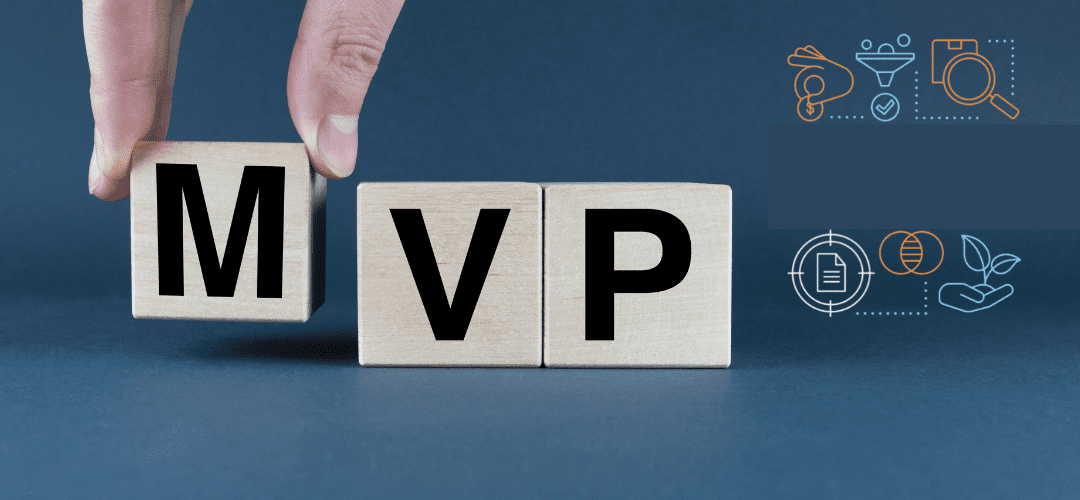The Prime reason why technopreneurs end up not getting initial momentum with their mobile and web applications is they fail to understand target customers’ needs.
Here I want to share a hands-on, action-oriented 7-step plan for building a Minimum Viable Product MVP to test your specific target customers with their niche need fulfillment.
But Let’s understand the Concept of MVP and its Benefits first.
Minimum Viable Product (MVP)
What is a Minimum Viable Product?
A minimum viable product, or MVP, has many different features. It attracts early-adopter customers and validates a product idea early in the product development cycle. MVP is feasible in the software industry where it can help the product team to receive feedback from the user. This quick response and feedback equip them to iterate and improve the product.
MVP plays a pivotal role in Agile development. As in this methodology, continuous Validation and iteration based on user input are sought.
It is crucial to plan your app right from the start. Adding too many unnecessary features makes an app dense and heavy. Instead, adding a few valuable features makes an app composed, purposeful, and easy to understand.
Purpose of a Minimum Viable Product
Eric Ries introduced the concept of MVP as part of his lean startup methodology. He describes the purpose of an MVP as the version of a new product that allows a product development team to collect the maximum amount of validated learning about customers with the least effort.
A company that decides to develop a Minimum Viable Product (MVP) is beneficial, i.e., building only the essential feature of your solution – nothing more, nothing less. It saves time and money as only the necessary core functionality is developed.
Key Benefits of developing an MVP :
A company can release a product to the market at the earliest.
Test an idea with users before exhausting resources on a product’s full development.
To know what resonates with the company’s target market and audience.
An MVP minimizes the time and resources.
A 7 – step plan for building Minimum Viable Product (MVP)
Here is a detailed 7 – step plan you can follow to create your mobile app.
1. Market research and Conceptualisation
The first step is planning. You cannot rush into app development unless you have a solid plan. A well-thought approach is vital to creating a successful mobile application. Start with creating a basic concept of your application, followed by market research. You need to understand your customers and what they are looking for to build an app that caters to their needs.
2. Identify and map the user’s journey.
The next step is to understand what a customer goes through. Try to look at your application through a consumer’s eyes and figure out what they see. Map out their journey to know all the components you need to create an app that assists your customers the right way.
3. Identify MVP features and establish a launch plan
Do not include unnecessary features. Figure out what you need and the essential basic elements that need to be added to the MVP. Once you have your basic features, you can curate a launch plan that works for your MVP.
4. Establish development process aligning launch plan
There are many methodologies today for developing software solutions, but one methodology which has been quite effective and proven is Agile Methodology. The methodology focuses on creating software that matters. It places the user of the software at the center, ensuring that the software is developed in accordance with the user’s needs. This helps keep the software development in the right direction, eliminates waste, and saves time and money. You can choose either Scrum or Kanban as the development methodology for delivering high-quality mobile app.
5. Strategize App Marketing Plan
Once you have your developmental plan all sorted out, you could start focusing on this product’s marketing strategies. It would help if you came up with exciting ways to publicize your application so that it catches your customers’ eyes.
6. Test Early and Continuously
The key to a successful app is frequent testing. If you want to run a bug-free application, you need to regularly test your app and fix any issues while still in the testing phase. An agile approach could benefit you in this regard. Continuous testing is significant because you can test features early and adjust them as needed. Continuous testing also helps catch bugs as early as possible, keeping the cost of fixing the bugs low.
7. Plan for Soft launch/Pilot
A soft launch is suggested for your app because it gives you time to focus more on perfecting the app. This type of launch does not attract a ton of unwanted attention to your app. You can introduce this app to a few crucial people and test the response. You can then make any changes that might be needed to better the app’s performance.

